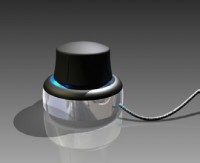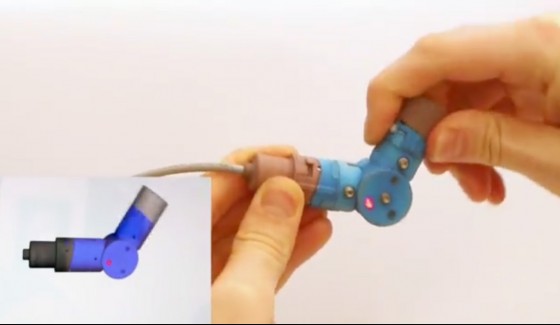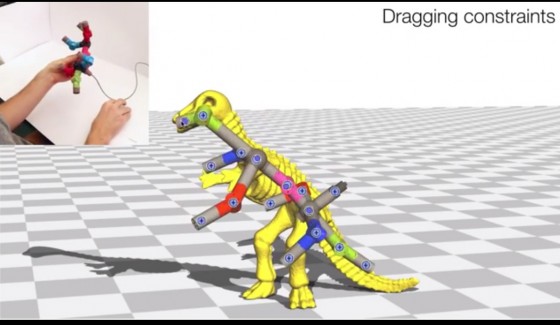The Interactive Geometry Lab at ETH Zurich designs a new way to move and post virtual characters.
By Jon Peddie
Trying to manipulate and move a model, or an idea, that’s in 3D while dealing with a 2D screen has never been easy. Various attempts have been made to give designers a 3D control or feel that could be translated into a computer-based 3D model like Maya or SketchUp. Buttons have been added to mice, and boxes with nine knobs on them were popular in the past. Today the 3Dconnexion oine of 3D controllers are probably the most popular, and there are high hopes for gesture-based devices like Leap Motion.

Back in school, some of you may have played with molecule models made from sticks and balls that could be assembled to visualize and study complex molecules.
Artists use puppet-like models to visualize a person or animal and then try to draw it on paper or on a screen because skeletal shape deformation is one of the most popular techniques for bringing 3D characters to life.

Something similar has taken shape (pun intended) in the Interactive Geometry Lab at ETH Zurich.
Professor Olga Sorkine-Hornung and her students have come up with a clever way to manipulate virtual shapes, like animated characters on a computer screen. They have developed a joystick-like system to move and pose virtual characters made up—similar to the molecule models—of modular building blocks. An artist can assemble these blocks into an approximate representation of any virtual character, be it a human, a dog or an elephant, or even just single body parts like arms or a hand.
This is a full-tech system. It uses 3D printed animated joints that have three axes of measurement using Hall sensors and small magnets embedded in the joints. They are realizing angular accuracy of about 1 degree, and angular precision of less than 0.1 degree; the sensors are read at 250 Hz.

The researchers have made the blueprints for their device’s building blocks available as Open Hardware, hoping to foster further research. “Anyone can 3D-print the separate units and with the help of an engineer integrate the electronics,” said Sorkine-Hornung.
Also, a set of 25 ready-made building blocks might be made available commercially at some point. Sorkine-Hornung says they are going to present the device at Siggraph.

What do we think?
This is one more tool in the animator’s kit that will find many adherents, and probably become very popular in schools. Animation is such a tricky job, no one tool can satisfy all the needs any more than can one program.





